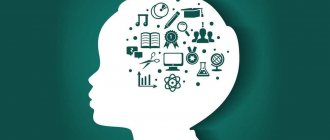What is cognitive behavioral therapy, at the intersection of what areas of psychotherapy was it formed, what techniques does it use and what psychological problems does it help resolve? In the treatment of what mental disorders is it effective? Is it capable of teaching a person to live in harmony with himself and the real world? These and other questions in this area of psychotherapy became the subject of discussion with the Chief Medical Doctor, practicing psychiatrist, psychiatrist-narcologist and psychotherapist Vladislav Sipovich.
What is cognitive behavioral therapy and what are its benefits?
Cognitive-behavioral therapy (CBT) is a fairly common integrated area of psychotherapy that combines two approaches to the treatment of mental disorders - cognitive and behavioral psychotherapy. Also known as cognitive behavioral psychotherapy (CBT). Its distinctive feature is its short-term nature, focusing on correcting errors in thinking and behavioral skills, adapting emotional and behavioral reactions to the needs of the client and achieving success in performing social, professional, family, creative and other functions.
Cognitive psychotherapy for personality disorders is based on the principle of recognizing that their main cause is thinking errors in the form of illogical, inadequate and inappropriate beliefs that a person follows consciously or unconsciously. By changing incorrect thinking stereotypes to more functional and realistic ones, you can completely change a person’s worldview on his own inner world and attitude towards the reality around him. This is achieved by encouraging and consolidating positive thoughts and beliefs, as well as by denying unwanted, damaging forms of thinking.
Behavioral therapy focuses on correcting behavioral skills without delving deeply into the patient's mind and way of thinking. Teach a person to communicate correctly with others, avoid or painlessly resolve conflict situations, achieve goals, detect and eliminate harmful and inappropriate habits, etc. Cognitive-behavioral psychotherapy combines and enhances the therapeutic effects of both approaches, uses their techniques, and has clinically proven success in treating many mental disorders. A person can be taught a new line of behavior in certain situations, but only by changing his way of thinking, realizing the destructiveness of thoughts about his own insignificance, uselessness and inability to live, can a person radically change his destiny. Only a meaningful approach to one’s behavior is effective in any situation, and not just in those lost in behavioral psychotherapy sessions. But this is not the only advantage of CBT. Its advantages also include the following nuances: • Specification of circumstances. Like Gestalt therapy, CBT operates on the “here and now” principle. This means that the subject of consideration is not past mental trauma, but problems of the current time that a person is not able to resolve on his own. • Active work of the patient, who not only learns new skills, but also practices them in specific situations in order to use them in the future without seeking repeated help from a psychotherapist (what is the difference between a psychologist and a psychotherapist). • Fast therapeutic effect. Usually 5-10 sessions are enough to achieve a pronounced effect. • CBT has been proven effective in treating mental disorders in multiple clinical trials, which explains its growing popularity. The duration of CBT is determined purely individually and depends on the following factors: • The severity of the patient’s condition. • Set tasks. • The wishes of the patient himself. For some, 6-8 sessions are enough, while others feel the need to communicate with a cognitive psychotherapist for several months. And this does not indicate lack of effectiveness, but rather the comfort of the treatment process itself for the patient’s psyche. It should not be forgotten that the ultimate goal of CBT is to prepare a person to independently solve problems of various types, i.e. his “armament” with the emotions, thoughts, ways of behavior and communication necessary for personal development and success in life. What are the basic principles of CBT and how do they correlate with other areas of psychotherapy? As I already mentioned, cognitive behavioral therapy is a complex direction and therefore creatively combines the principles and techniques of its two components - behavioral and cognitive psychotherapy. From behavioral therapy, its basic principles were taken, based on the theory of behaviorism (translated from English as behavior). It assumes that human behavior is a set of unconditioned and conditioned reflexes developed on their basis, fixed or rejected by the individual’s individual history. The theoretical foundations of behaviorism were laid by Russian scientists S.M. Bekhterev. and Pavlov I.P., whom almost all well-known followers of behaviorism in the West consider their teacher. It is the principles of the formation and extinction of conditioned reflexes due to their reinforcement or non-reinforcement by unconditioned reflexes that formed the basis of the theory of behavioral psychotherapy. In addition, of fundamental importance in behaviorism and cognitive-behavioral psychology, respectively, is the concept of behavioral patterns that play a key role in the occurrence of many mental disorders. Patterns of behavior include, in stressful situations, certain vegetative-somatic and endocrine reactions that explain the development of psychosomatic disorders. In addition, the following postulates are of fundamental importance: • Use only methods that have proven their effectiveness in numerous experiments. • The relativity of the concept of normalcy and mental abnormalities. • Focus on developing optimal and desirable behavior for each individual patient. • Directiveness of the psychotherapist, which involves working according to a pre-developed scheme with answers to questions posed and performing recommended exercises with the inclusion of family members in homework. There are many methods of behavioral therapy, but in the practice of CBT the most recognized and widespread are the following: • Imitation of the desired behavior of a real person, a book or film character, or an invented symbolic model. • Role-playing training with training in certain behavioral skills under various problematic circumstances. For example, when communicating with a stranger or in conflict situations. Most often, the patient plays himself, but sometimes this role is played by a psychotherapist or another group member, which allows the patient to examine himself and his behavior as if from the outside and realize his mistakes. • Feedback, in which hardware monitoring of the patient’s stressful state is carried out and when a state of relaxation is achieved, it is reinforced with positive sound (favorite melody, sound of the sea, etc.) or visual images. • Psychological immunization, or stress-vaccination therapy, the main goal of which is psychological vaccination (sensitization) of the patient to face stressful situations of varying degrees of complexity. This allows you to move from a state of helplessness to self-control and the ability to successfully cope with stressful situations without their destructive consequences for the body and psyche. As for cognitive therapy, things are somewhat more complicated. To understand its basic principles included in CBT, one must first consider the goals and merits of cognitive therapy. Advantages of cognitive therapy: • The presence of a natural science base in the form of a psychological theory of normal development, as well as the occurrence of mental disorders. • Psychological models for each nosological group of mental pathologies. • Existence of own specific techniques and stages of treatment. • Relatively short course of therapy, including 20-30 sessions. • Humanistic orientation, putting the interests of the patient at the forefront. Among the main goals of cognitive therapy, which have been transferred to CBT, the following can be identified: • Help in solving the patient’s social, professional, family, career, creative and other problems. • Identifying and eliminating the causes of mental pathologies, in particular, correcting cognitive errors, eliminating dysfunctional beliefs and behaviors. • Partial or complete elimination of symptoms of mental disorders. • Reducing the likelihood of relapse. • Strengthening the therapeutic effect of pharmacological drugs. During the treatment process, a cognitive psychotherapist strives to achieve practical solutions to the following problems: • The patient’s awareness of the influence of his own thoughts on his behavior and emotional background. • The ability to identify, observe and evaluate so-called automatic thoughts. What it is? I'll tell you a little later. • Replacing erroneous mental attitudes with more rational and positive ones. • Identification and leveling of maladaptive beliefs as the basis of erroneous thoughts and behavioral reactions. As you can see, the complex merging of behavioral and cognitive therapy in CBT is completely justified and logical, because their common ultimate goal is improved socio-psychological adaptation to the conditions of the surrounding world and the achievement of harmony with oneself and the external environment.
Higher School "Learning Environment"
Website : https://psychology.sredaobuchenia.ru Cost : 70,000 rub.
Rational-Emotive-Behavioral Therapy Duration of training: 6 months (1 semester), 250 ac. hours
Rational-Emotive-Behavioral Therapy (REBT) is a direction in psychotherapy and psychological counseling proposed by Albert Ellis. The method has existed and developed since 1955, is the most recognized within the Cognitive-Behavioral direction in psychology and is actively coming to Russia.
Program "Rational-Emotive-Behavioral Therapy":
- Based on the most modern protocols and offering only up-to-date knowledge
- Allows you to study the “gold standard” of psychotherapy, the global trend of evidence-based medicine
- Aimed at increasing your demand in the market of psychological services - many clients are looking for specialists in the Cognitive-Behavioral approach
- It is focused on practice and contains a large number of practical classes, in which real psychological problems and cases will be examined under the supervision of leading psychologists
Program content 250 academic hours (176 - theory and practice; 74 - independent work)
Practice takes up 50% of classes and takes place in mini-groups under the supervision of practicing psychologists. By analyzing the real problems of group members and analyzing mistakes, they develop the skills that are necessary to start working with clients’ emotional problems: diagnosis, conceptualization, restructuring of irrational beliefs.
Module 1. Introduction to the basics of REBT (46 academic hours) Module 2. General therapy strategies (46 academic hours) Module 3. Diagnostics and ABC conceptualization (46 academic hours) Module 4. Therapeutic interventions. Disputation and formation of an effective response (65 academic hours) Module 5. Integrity of the therapeutic process. Beginning and end of therapy (47 academic hours)
Based on the results of the program, students
- Will receive the necessary professional knowledge and skills in the field of Rational-Emotive-Behavioral Therapy
- They will be able to begin to apply the REBT approach in practice: conduct initial diagnostics, agree with the client on the goals of therapy, identify and challenge irrational beliefs
- They will begin to use the acquired skills for personal purposes: to regulate and restructure their own irrational beliefs and improve the quality of their life
What is the essence of cognitive behavioral therapy?
The essence of CBT cannot be understood without its basic concepts, among which the most important are: • Schemas, which are deep mental attitudes responsible for a person’s attitude towards himself and the realities of life. They can be adaptive and non-adaptive (the whole world is a mess, and there is no point in trying to figure it out), positive and negative, idiosyncratic (individual) or universal. • Automatic thoughts are conclusions that form in the mind so quickly that they do not have time to be fully comprehended, but they manage to influence emotions, the adoption of one decision or another, and the behavioral response of the individual. Usually these are frequently repeated thoughts when communicating with people around you - parents, children, bosses, friends and colleagues. After automation, the brain gets used to not thinking about thoughts, but simply “retrieving” them from memory along with the emotions and action patterns they previously evoked. If the experience of an automatic thought has brought positive results, then it can be useful in making a quick decision, but if the automatic thought was initially incorrect, then following it can only do harm. That is why identifying such thoughts, extracting them from the subconscious and convincing counterargumentation makes it possible to rewrite erroneous mental attitudes and accordingly change behavior patterns. • Cognitive errors, or otherwise distorted thought patterns that incorrectly reflect existing reality. • Arbitrary conclusions are conclusions made without confirmation by facts or in the presence of facts that contradict this conclusion. • Overgeneralization. Occurs when comprehensive conclusions are drawn from a single episode. • Exaggeration and understatement of one's role and the significance of ongoing events. By exaggerating the complexity of the situation, the individual underestimates his capabilities in resolving it. • Personalization - observed when the patient considers certain external events as relevant to him, when in fact they do not concern him at all. • Maximalism - putting forward excessive demands on oneself or the world around us in the form of opposing attitudes. For example, “if I don’t make a million, then I’m a complete insignificance,” “if I don’t become famous, then this life will be a swamp,” etc. • Obligation is an overdeveloped sense of duty and responsibility, often imposed from the outside and not allowing for alternative behavior. It can seriously poison a person’s life and prevent him from self-realization. The psychotherapist faces the difficult task of determining the predominant motive that led to mental disorder and irrational behavior, especially since there may be several of them. The doctor should find out all this and develop a treatment plan already in the first sessions, and the patient’s task is to help him with this. First of all, when preparing for the visit, it is advisable for the patient to think through and formulate the final goals of treatment in advance, i.e. what he would like to achieve and/or get rid of.
"Introvert's Right Brain"
Website : https://online.artforintrovert.ru Phone Cost : 2890 rub.
Video course: Cognitive psychology 6 blocks, 12 hours
On the course we:
- Let's trace the history of the development of the cognitive approach
- Let's see how great thinkers and scientists prepared first the behavioral and then the cognitive revolution in science
- Let's take a closer look at how our cognitive processes trigger conditions such as depression, anxiety, guilt and low self-esteem
- We will pay much attention to practical work: we will consider the tools that cognitive behavioral psychotherapists use in their practice
Topics of video lectures:
- History of psychotherapy from Socrates to CBT
- Cognitive distortions and compensatory strategies
- Being your own therapist: how cognitive self-help works
- Depression
- Anxiety and phobias
- Guilt, shame and self-esteem
You immediately get eternal access to all course lectures. The kit includes notes for consolidating knowledge and lists of recommended literature. After completing the course, a certificate is issued.
How are CBT sessions conducted and what techniques are used?
Treatment with a cognitive psychotherapist takes place in the form of 1-2 sessions per week, the total number of which is 20-30 sessions. As I already said, it is very important before the first session that the patient first decides on the goals of psychotherapy. First of all, he must answer the following questions: • What does not suit you in your life, character, relationships and what specifically would you like to change - relationships in the family, work team, with the opposite sex, or maybe you want to find yourself in a new social role or bring back creativity? • What bad habits or addictions would you like to get rid of (for example, gambling addiction) and what useful skills would you like to acquire? All these problems need to be discussed with a psychotherapist at the first session, who will help to specify them and prioritize them. At the same time, he can offer the patient to undergo a series of tests to objectively assess his mental and moral state, the results of which, by comparison, can be used to monitor the effectiveness of the therapy, to determine its tactics and select the optimal CBT techniques in each specific case. The choice of CBT techniques and methods is huge. In addition to those borrowed from behavioral therapy, cognitive therapy techniques are widely used, namely: 1. To identify automatic thoughts: • Recording thoughts when performing necessary and not performing unnecessary actions. Moreover, this should happen in the order in which thoughts arise, which will make it possible to identify their priority in motivating the patient’s actions. Usually the first thought that comes to mind will be the most important. The main efforts of a cognitive psychotherapist should be directed at its correction. • Cognitive rehearsal, associated with the mental playback of negative situations and verbal voicing of emerging automatic thoughts. All results of the experiment are recorded in a separate diary of thoughts, which also records all the thoughts that arise in the patient over several days in order to identify the most significant ones. • Detachment is a kind of abstraction from one’s own thoughts and its objective assessment. Allows you to highlight and realize the spontaneity of bad thoughts, the automatic nature of their occurrence, inherent in previous negative experiences, as well as their non-adaptive nature, i.e. the ability to cause destructive negative emotions.
2. After identifying automatic thoughts, the most difficult work begins: changing them and correcting distortions. To do this, the following methods are used: • Argumentation and counterargumentation with writing down and repeatedly reading the arguments “for” and “against” when an automatic thought appears. With frequent reproduction, the human brain will remember useful arguments and remove “harmful” motives from quick memory. • Speaker technology. It consists of filling out a table with several columns - the first one records the problem, the 2nd - the accompanying feelings and emotions, the 3rd - the automatic thoughts that arise in this case, the 4th - the arguments for them, and the 5th - th – “against”. • Identifying the pros and cons of the problem in the short and long term. • Conducting experiments to test the correctness of judgments. For example, an offer to evaluate a situation without emotion or imagine how other people would react to it. • Discussing past events with witnesses, especially in situations with patients whose memory is distorted or replaced by fantasies, for example, in schizophrenia. The method is also relevant in case of misinterpretation of the behavior and motives of other people. • Imagination. This is especially true for anxious patients, in whom maladjustment is caused not so much by automatic thoughts as by obsessive images. A variety of techniques are used here, including metaphors, poems, parables for greater clarity, commands to oneself to “stop!”, replacing a negative image with a positive one, etc. • Replacement of emotions and revaluation of values. • Appeal to the experience of the psychotherapist himself, statistical data, fiction, etc. 3. At the next stage, they focus on identifying logical errors and contradictions in judgments. The following techniques are most often used here: • Graduality, or scaling, when extreme polarization of judgments using a scale is excluded, i.e. placing them according to the degree of objective reflection of reality. • Reattribution is a review of the patient’s measure of responsibility for his actions in a given situation, which is important for a correct assessment of one’s own contribution and external factors in the development of events. • Exaggeration – taking a certain belief of the patient to extremes or absurdity and thus encouraging it to be re-evaluated.
4. Assessing the likelihood of the worst case scenario allows you to narrow the time frame of the problem and reveal its true significance in the patient’s life: • Decentering, when the patient’s ideas that he is the center of everyone’s attention and that the whole world is aimed against him lead to a state of discomfort and provoke sociopathic thoughts. • Decatastrophization. It is used for various anxiety disorders and forces the patient to think about a realistic assessment of the consequences of the events that worry him. For example, if this does happen, what will happen - will your career be destroyed, or you will die, or your family will abandon you, or will all this last forever? The answers to these questions will allow a person to understand the transitory nature of the problem, and the automatic thought of its infinity will simply disappear. To consolidate the positive effect of CBT, it is important to use exercises such as: • Repetition - repeated repetition of the desired thinking and behavior in practice, and with the consolidation of positive emotions and thoughts. • Together with the psychotherapist, development of a plan for future actions, including conditions and deadlines for implementation, as well as the sequence of actions in the event of extreme or unforeseen situations. And this is not a complete list of techniques used in cognitive behavioral therapy, which are combined into blocks according to specific goals, stages of therapy, nosological forms of mental disorders, as well as the degree of their severity. You can imagine what a colossal arsenal of knowledge, experience and intuition a cognitive psychotherapist must have in order to select the optimal treatment regimen for the patient and adjust it depending on whether progress is achieved or not.
Institute of Psychotherapy and Clinical Psychology
Website : https://psyinst.moscow Phone , +7 (499) 955-40-15 Cost : on request
Prof. program retraining in cognitive-behavioral technologies in psychotherapy and counseling 6 months. (480 hours)
The program is adapted for Russia and runs in the “theory + training + workshop” mode, which allows you to analyze theoretical material and immediately test its practical application. Modeled standard situations, analyzes of complex cases from the practice of the presenter and cases proposed by participants are used.
Program structure:
- Basic module “Theoretical foundations of CBT”
- Module “Cognitive Technologies”
- Module “Technologies for cognitive regulation of functional states”
- Module “Behavioral Technologies”
- Specialized module – “Clinical practice”
- Specialized module – “Mindfulness”
- Specialized module – “Trainings”
- Final module
Upon completion of the program, a standard professional diploma is issued. retraining with the right to conduct professional activities in the field of psychological counseling.
For what types of mental disorders is cognitive behavioral therapy indicated?
CBT has proven successful in treating many mental disorders, in particular: • Depression. • Increased anxiety and even its generalized forms. • Panic attacks. • Hypochondria. • Post-traumatic syndrome. • Phobias of various genesis and nature. • Eating disorders and their extreme manifestations in the form of psychogenic anorexia. • Fear of public speaking. • Sociopathic disorders. • Chronic pain. • Psychological problems in the family, athletes, schoolchildren, temporarily isolated persons and other categories of the population, including preschoolers and pensioners. In combination with drug therapy, CBT has proven its effectiveness in treating diseases such as: • Various types of addictions, including alcohol and drug addiction. • Schizophrenia and hallucinations that accompany it. • Severe depressive states. • Bipolar disorder (split personality). • Psychoses. • Somatic disorders – hypertension, colitis, chronic fatigue syndrome, etc.
The scope of CBT is constantly expanding, and the direction itself is gaining more and more popularity. This is explained primarily by its safety for the patient, minimal interference in deep mental processes and its focus on adapting the patient to the changing modern world. The most important thing that CBT allows you to achieve is the ability to maintain your emotional and mental status in any, even the most stressful and seemingly catastrophic situations.
Moscow Institute of Psychoanalysis
Website : https://inpsycho.ru Phone Cost : 50,000 rub.
Course: Cognitive-behavioral psychotherapy Advanced training: 100 hours, online lectures and webinars on the ZOOM platform
The program structure includes:
- Practice-oriented seminars
- Group supervision
- Intervision - 10 sessions between seminars
- Independent work
At the end of the course, an exam in the form of supervision is taken. Students who have completed 60 academic hours of seminars and 20 academic hours of group intervision (10 classes of 2 academic hours between seminars) are allowed to take the exam.
At the end of the training, students receive a certificate of advanced training.
Operating principle
Therapy is based on the collaboration between therapist and patient. The therapist does not teach the patient how to think correctly, but together with him he understands whether the habitual type of thinking helps him or hinders him. The key to success is the active participation of the patient, who will not only have to work during the sessions, but also do homework.
If at the beginning therapy focuses only on the patient’s symptoms and complaints, then gradually it begins to affect unconscious areas of thinking - deep-seated beliefs, as well as childhood events that influenced their formation. The principle of feedback is important - the therapist constantly checks how the patient understands what is happening in therapy and discusses possible errors with him.









